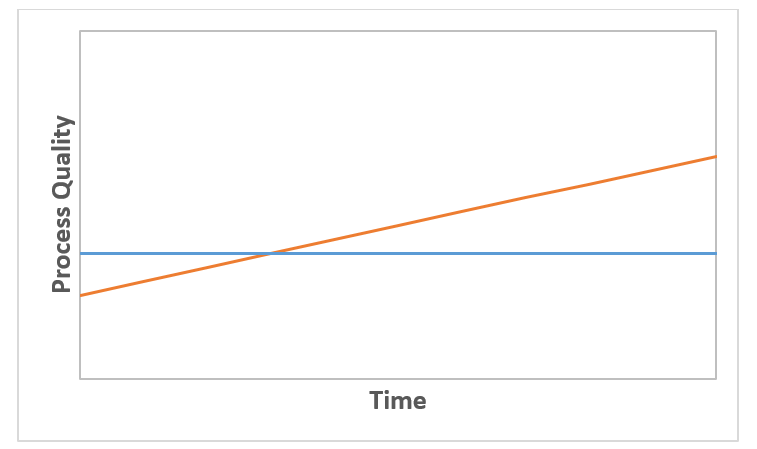Business process improvement is a systematic technique that an organization can use to iteratively optimize its processes to achieve more efficient results. Several researchers have published specific methodologies over the years, including H. James Harrington, Tristan Boutros and Tim Purdie, and Michael R. Wood. These methodologies have varying levels of complexity and require different levels of investment, however all of them produce good results when applied consistently.
The idea of continuous improvement has received a lot more attention in recent years, driven by the growth of Agile and Lean principles. Continuous improvement is even more effective within those frameworks, because the rapid iteration cycles give fast feedback and frequent opportunities for optimization.
The Challenges of Traditional BPM Solutions
One major issue holding businesses back from becoming truly agile is the traditional Business Process Management (BPM) tools themselves. The time and resources required to make changes using traditional BPMS’ creates long delays between identification of improvement opportunities, and the implementation of the improvements you wish to make. The long period of time required for implementation also adds to the delay in getting to the business value expected from the improvements. In addition, the lengthy cycle time reduces the number of improvements that can be made over time, further reducing or deferring the business value which can be accessed.
For a customer facing/customer driven business, this delay in implementation of improvements can be fatal for strategic and competitive advantage.
By the time proposed improvements are delivered, customer demands and behavior have changed, requiring yet further modifications to customer-centric processes, creating an endless and frustrating game of “Catch me if you can!”
Further, there are no guarantees that proposed modifications to existing business processes will deliver the anticipated improvement hoped for. In such an instance, the ability to return to the unmodified process state may be very slow too, adding to the risk of a miscalculation.
How Lean BPM Accelerates Continuous Improvement
Lean BPM solves those problems, by allowing for rapid deployment of both new processes and modifications to existing ones. With its streamlined tools and easy learning curve, managers and business analysts may quickly modify their business processes and reports themselves, without the need for specialist programmers or database administrators. Pushing a process into a live operational state is achievable with a few clicks of a mouse button, indeed the majority of time spent on continuous improvement in a Lean BPM environment is on working out what the changes to business processes ought to be made, rather than actually implementing them. The result of this improved speed and flexibility is that value can be mined much faster, while many more rapid cycles of improvement can be achieved. Rapid cycles allow for smaller, incremental changes, which may be easier to implement and manage, while increasing the frequency of change should result in larger total improvements gained over time.
There are two key ideas that organizations need to understand for successful continuous improvement.
Firstly, continuous improvement is itself an ongoing process and as well as a state of mind. Organizations must allocate time routinely to discuss performance, identify issues and opportunities, and plan improvements. Equally, insight into what can be changed and improved ought to come not simply from your KPIs and metrics, but also from those people actually working with the processes involved. You also will need to assign someone to implement the improvement, and they must have the authority and ability to span the entire process, which often crosses inter-departmental boundaries.
Secondly, business processes and modifications do not need to be perfect on Day One. In fact, they will almost certainly not be, but continuous improvement implicitly acknowledges that the starting point does not matter, because the improvements you do make in process quality will quickly catch up to and surpass any normal baseline:

Lean BPM adds an exciting new element in the pursuit of the Continuous Improvement ideal: rapid change and deployment of live, operational business processes, managed directly by the business team without the need for specialist coding and dev support. This allows for rapid response to the changing business environment, whether it be from internal pressures, or external ones, such as customer demands or industry regulators imposing or changing compliance standards. With greatly increased speed to implement process changes, and even bigger improvements in ease of deployment, this allows faster, more frequent improvement and greater long-term success.
